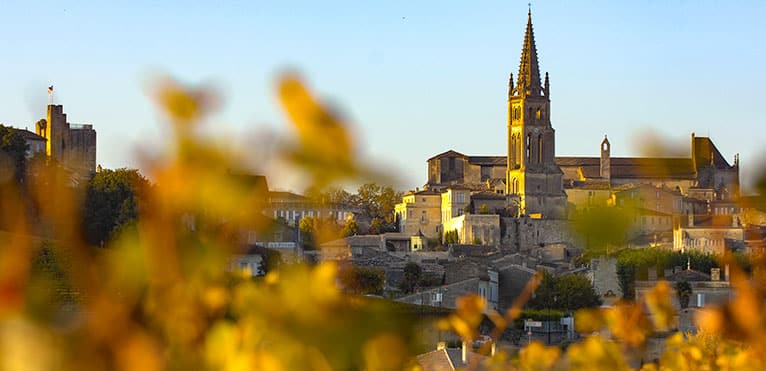
Contents
Lussac-Saint-Émilion is a wine appellation located in the Bordeaux region, a vineyard renowned worldwide for its wines. Lussac-Saint-Émilion is dedicated to the production of red wine. It has been awarded the “Appellation d’Origine Contrôlée” and “Appellation d’Origine Protégée” certifications.
Lussac-Saint-Émilion has been developing since antiquity
The appellation’s history dates back to antiquity, when the Bordeaux vineyards already existed. In fact, it trades with Northern Europe and England in particular, thanks to its advantageous geographical position. In the Middle Ages, King Henry II of England seized the territory following his marriage to Eleanor of Aquitaine. Fortunately, this monarch is of French origin, specifically Norman and Angevin, as have all the kings of England since William of Normandy. French was the official language of the English Court. As early as the twelfth century, vineyards began to develop.th century century and gradually built up its success and renown.
Lussac-Saint-Émilion enjoys an oceanic climate
The Lussac-Saint-Émilion appellation is not geographically isolated. In fact, it lies close to the Libourne vineyards, where the following appellations can be found: Fronsac, Canon-Fronsac, Pomerol, Lalande-De-Pomerol, Saint-Émilion, Saint-Émilion Grand Cru, Montagne-Saint-Émilion, Saint-Georges-Saint-Émilion and Puisseguin-Saint-Émilion. In terms of surface area, the vineyard covers more than 1,440 hectares. The climate in this geographical area is temperate oceanic with continental tendencies. In fact, the seasons are rather dry due to moderate rainfall: precipitation is well distributed throughout the year. Summers are hot and dry, but the Isle and Dordogne rivers moderate the heat.
These two rivers also protect us from the risk of frost in winter. The average annual temperature is 12.8°C. In addition, cultivated land is found on the south-facing valleys and plateaus. This situation allows natural drainage, which is good for the vines. The soils are clay-limestone to the south. Here we find limestone with asand molasses. To the north, they are more sandy-clayey or even sandy-loamy, with the presence of Périgord gravel. The presence of clay in the subsoil ensures the necessary water supply during the summer months.
Lussac-Saint-Émilion is complex and spicy
Production in the Lussac-Saint-Emilion appellation is dominated by the Merlot grape variety, which accounts for nearly 65% of the total. The latter gives the wine its unique color, complexity and alcoholic richness. It also brings suppleness and roundness to the palate. Cabernet Franc accounts for 25% of the total. It gives the wine a delicate, slightly spicy aroma and freshness, but also a tannic structure that will allow the years to sublimate the wine’s qualities. The remaining 10% is Cabernet Sauvignon. The Lussac-Saint-Émilion appellation will seduce you with its dark ruby color and delicate purplish tints. These wines emanate primary notes of red fruit, but also fruity aromas of prune and warm flavours. spices, undergrowth and leather. Roasting notes are accompanied by hints of roasted cocoa.
As for the palate, the attack is and the substance powerful, even full-bodied. The tannins are firm and elegant, yet well integrated. The wine opens with long, pleasant woody notes. The appellation’s ageing potential ranges from five to ten years.
Lussac-Saint-Émilion sublimates atypical meats
Lussac-Saint-Émilion is a dry, still red wine. It goes perfectly with atypical meat dishes such as roast ostrich or chamois stew. It is also delicious with Asian dishes such as beef with onions. cooked Chinese-style.
Pairing Lussac-Saint-Émilion with traditional dishes such as entrecôte grillée à la bordelaise or choucroute au confit de canard will delight your taste buds, as will pairing it with consommé de boeuf à la brunoise. Wines from this appellation are best enjoyed at a temperature of 16° – 17°C.
Successful vintages throughout the 20th century
The best vintages are 1929, 1945, 1961, 1982, 2005 and 1990.
World-renowned estates
Château De Lussac
Château De Lussac, a wine estate in Lussac Saint Emilion, was created in 1876 and extends over a total surface area of 32 hectares. The vines have an average age of 30 years and are grown on clay-limestone soils. The grapes are harvested both mechanically and by hand, in keeping with tradition.
On average, 80,000 bottles are produced each year. They are then sold in France, Germany, Belgium, China, Japan, the Netherlands and Switzerland.
Maison Malet Roquefort
This vineyard belongs to the Malet Roquefort family, who family in the commune of Saint-Émilion over three centuries ago. Excellence, elegance, authenticity and independence are the values that have forged the estate’s reputation over the centuries. In fact, since 1954, Château La Gaffelière, which belongs to the family, has ranked among Saint-Émilion’s premier grands crus classés.
The Malet Roquefort family favors cutting-edge technologies in order to offer the best possible wines. In fact, every year, satellite maps of the estates are produced to provide precise information on the soils, so that they can be used to best advantage.